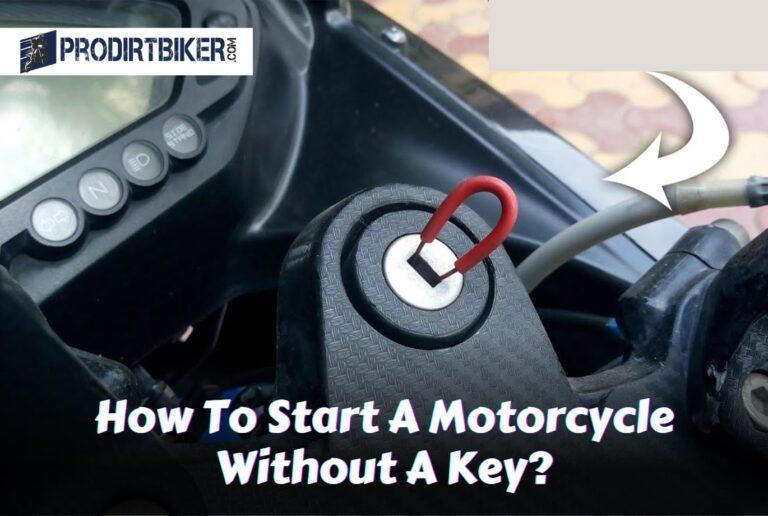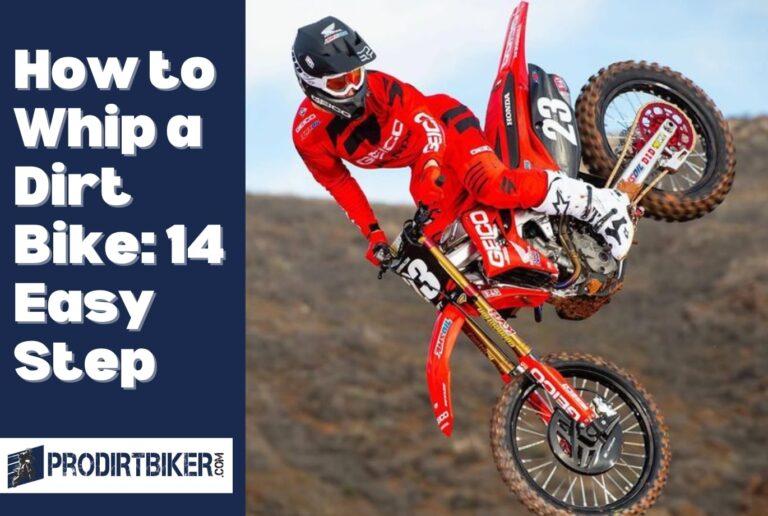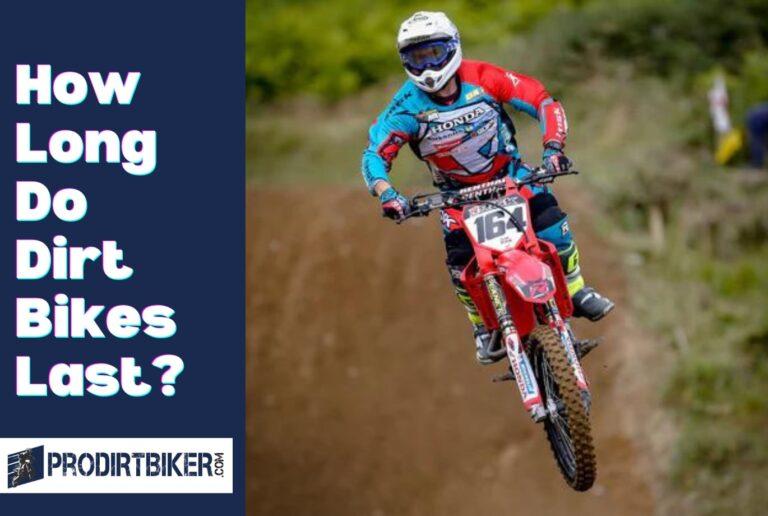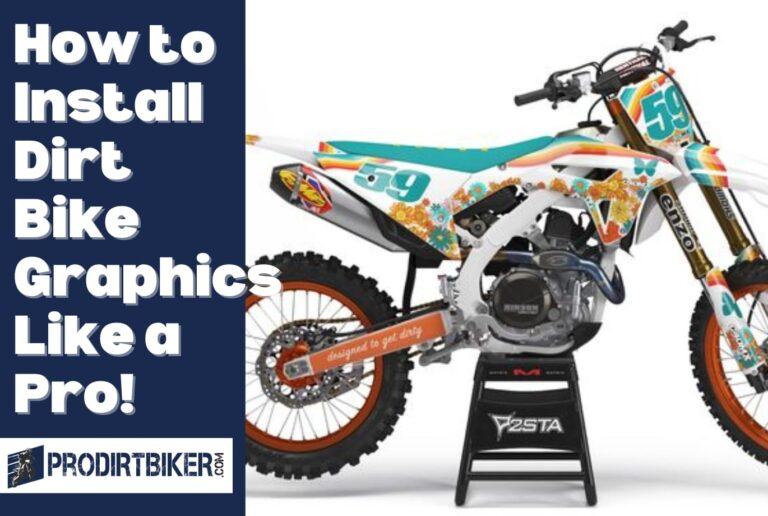How Fast Does A Motorized Bike Go? Discover the Top Speeds!
A motorized bike can reach speeds of 30-50mph, depending on the engine size and modifications. However, the actual speed may vary based on factors such as terrain, weight of the rider, and weather conditions.
Despite this, it is essential to follow local traffic laws and regulations regarding speed limits and licensing requirements for motorized bikes. Motorized bikes have gained popularity as a convenient and eco-friendly mode of transportation. By combining a bicycle with a motor, these vehicles offer an efficient and cost-effective way to travel short distances.
Whether you are using a pre-built motorized bike or converting a regular bicycle with an engine kit, you may wonder how fast these bikes can go. There are various factors that can determine the speed of a motorized bike. The size and specifications of the engine, along with any modifications or upgrades, can impact the top speed. Additionally, other factors such as weight, riding style, terrain, and weather conditions can affect the bike’s performance. On average, a motorized bike can reach speeds of 30-50mph. However, it is crucial to remember that these speeds are not guaranteed and may vary based on the specific bike and its components. It is important to note that while motorized bikes offer increased speed compared to traditional bicycles, riders should always prioritize safety and adhere to local traffic laws. Additionally, it is advisable to wear appropriate protective gear, including a helmet, when operating a motorized bike. Motorized bikes can attain speeds of 30-50mph, depending on various factors. These vehicles provide a practical and environmentally friendly transportation option, but riders should prioritize safety and comply with local regulations. Adapted from: https://www. bikeberry. com/blogs/learning-center/how-fast-does-a-motorized-bike-go.
Understanding The Capabilities Of Motorized Bikes
Motorized bikes have become popular modes of transportation for those who want a faster and more convenient way to get around. With their ability to provide speed and power, these bikes offer an alternative to traditional pedal-powered bicycles. If you’re curious about the speed capabilities of these motorized wonders, this article will explore the different types of motorized bikes available and shed light on their maximum speeds.
Exploring the Different Types of Motorized Bikes
When it comes to motorized bikes, there are three main types to consider: gasoline-powered bikes, electric bikes, and conversion kits for regular bikes. Each type has its own unique features and capabilities, so let’s dive in and explore:
Gasoline-Powered Bikes
Gasoline-powered bikes, as the name suggests, are equipped with engines that run on gasoline. These bikes offer a significant boost in speed and can reach impressive maximum speeds. On average, gasoline-powered bikes can easily reach speeds of 30-50 miles per hour. This speed range allows riders to travel faster than traditional bicycles and keeps up with the flow of traffic, making them a great option for commuting or leisure rides.
Electric Bikes
Electric bikes, also known as e-bikes, have gained popularity in recent years due to their eco-friendly nature and ease of use. These bikes are powered by rechargeable batteries that supply electricity to an electric motor. While electric bikes tend to have lower top speeds compared to their gasoline counterparts, they still offer respectable speed options. On average, electric bikes can reach speeds of 20-28 miles per hour, depending on the specific model and battery capacity. This speed range allows for a smooth and efficient ride, especially when navigating urban areas or hilly terrains.
Conversion Kits for Regular Bikes
If you already have a traditional pedal-powered bicycle, you can easily transform it into a motorized bike by using conversion kits. These kits provide all the necessary components to add a motor and convert your regular bike into a motorized one. The speed capabilities of conversion kit bikes may vary, depending on the specific motor and components used. However, most conversion kits can provide speeds of up to 20-30 miles per hour, giving you an efficient and fast alternative for commuting or recreational purposes.
In conclusion, motorized bikes offer a range of speed options, depending on the type and configuration. Whether you opt for a gasoline-powered bike, electric bike, or a converted version of your regular bicycle, you can experience faster travel speeds and enjoy a more convenient and enjoyable ride. Keep in mind that specific speed limits and regulations may vary by region, so always ensure you comply with local laws and regulations when operating a motorized bike.Factors That Affect The Speed Of A Motorized Bike
When it comes to motorized bikes, speed is often one of the main considerations for riders. However, the actual speed of a motorized bike can vary based on several factors. Below, we discuss some of the key factors that can affect the speed of a motorized bike.
Engine Size and Power Output
The size and power output of the engine is one of the primary factors that determine how fast a motorized bike can go. Typically, motorized bikes come with engine sizes ranging from 50cc to 250cc. Bikes with larger engine sizes tend to have more power and can achieve higher top speeds. A higher power output allows the bike to accelerate faster and maintain higher speeds. However, it’s important to note that the maximum speed also depends on the overall design and weight of the bike.
Weight of the Bike and Rider
The weight of the bike and rider has a significant impact on the speed of a motorized bike. Heavier bikes with heavier riders require more power to accelerate and maintain high speeds. The additional weight creates more resistance and can make the bike slower. On the other hand, lighter bikes and riders can achieve higher speeds more easily due to reduced resistance. It’s important to consider the combined weight of the bike and rider when determining the maximum speed of a motorized bike.
Aerodynamics and Wind Resistance
Aerodynamics and wind resistance play a crucial role in the speed of a motorized bike. Bikes with streamlined designs and minimal wind resistance can achieve higher speeds compared to bulkier and less aerodynamic bikes. Factors such as body positioning, windshield design, fairings, and even accessories attached to the bike can impact aerodynamics. Minimizing wind resistance allows the bike to cut through the air more efficiently, resulting in increased speed.
It’s important to note that while these factors significantly affect the speed of a motorized bike, other variables such as road conditions, engine modifications, and rider skill can also play a role. Therefore, optimizing these key factors along with proper maintenance and riding techniques can help maximize the speed of a motorized bike.
Top Speeds Achievable With Motorized Bikes
When it comes to motorized bikes, speed is often a top consideration for riders who seek thrill and excitement. Whether it’s a gasoline-powered bike or an electric one, there are several factors that can influence the top speed of these two-wheeled machines. In this section, we will explore the top speeds achievable with motorized bikes, delving into the potential of 50cc gasoline-powered bikes, the modifications and aftermarket parts that can push the limits even further, and how electric bikes compare in terms of speed. Let’s dive in!
Gasoline-Powered Bikes
Gasoline-powered bikes have long been popular among motorized bike enthusiasts due to their raw power and high speed capabilities. Powered by traditional combustion engines, these bikes can reach impressive speeds that might surprise you. Let’s take a closer look at the speed potential of 50cc gasoline-powered bikes.
The Speed Potential of 50cc Bikes
50cc gasoline-powered bikes are commonly considered entry-level motorized bikes due to their smaller engine size. However, don’t underestimate their speed potential. On average, a 50cc bike can reach speeds between 30 to 50 miles per hour (mph). This speed range can vary depending on factors such as bike weight, engine tune, and rider weight. It’s important to note that some states and countries may have speed limitations for such bikes, so be sure to familiarize yourself with local regulations.
Pushing the Limits: Modifications and Aftermarket Parts
If you’re looking to push the limits of your gasoline-powered bike’s speed, there are various modifications and aftermarket parts available that can help you achieve higher speeds. By upgrading components such as the exhaust system, carburetor, air intake, and sprockets, you can enhance engine performance and optimize speed. These modifications should be done with caution and within legal limits, as excessively high speeds can pose safety risks and may not comply with local road regulations.
Exceeding Standard Speeds with Nitrous Kits
For those seeking extreme speed gains, nitrous oxide (nitrous) kits can provide a substantial boost. Nitrous kits introduce nitrous oxide gas into the engine, resulting in increased power and acceleration. This modification is more advanced and requires expertise to install and use safely. It’s crucial to understand the potential risks and consequences before considering the use of nitrous kits on your motorized bike.
Electric Bikes
Electric bikes have gained popularity in recent years due to their eco-friendliness and ease of use. While they may not have the same raw power as gasoline-powered bikes, they offer their own advantages, including quiet operation and instant torque. Let’s explore how fast electric bikes can go and the factors that influence their speed.
How Fast Can Electric Bikes Go?
The top speed of electric bikes can vary significantly depending on various factors, such as motor power, battery capacity, and bike design. On average, electric bikes can reach speeds ranging from 20 to 28 mph. However, there are high-performance electric bikes available that can achieve speeds of up to 40 mph or even higher. It’s important to note that the legality of higher-speed electric bikes may differ by region, so always check local regulations.
Factors Influencing Electric Bike Speed
Several factors can influence the speed of an electric bike. The motor power and torque output play a significant role, as higher-powered motors can propel the bike to higher speeds more effortlessly. Additionally, battery capacity and overall battery health impact speed, as a larger capacity battery or a battery in good condition can maintain power output for longer time periods. Lastly, the bike’s weight, aerodynamics, and tire choice can also affect the top speed achievable.
Improving Speed with High-Performance Batteries
If you’re looking to increase the speed of your electric bike, one avenue to explore is upgrading to a high-performance battery. These batteries are designed to provide more power and longer ranges. However, it’s important to note that upgrading batteries should be done in accordance with manufacturer recommendations and may require modifications to the bike’s electrical system.
Comparison: Gasoline vs Electric Bikes
Now that we’ve explored the top speeds achievable with gasoline-powered and electric bikes separately, let’s compare the advantages and disadvantages of each.
The Advantages and Disadvantages of Gasoline-Powered Bikes
| Advantages | Disadvantages |
|---|---|
| High speed potential | Exhaust emissions |
| Raw power and acceleration | Fuel dependency |
| Familiar combustion engine technology | Noise pollution |
The Advantages and Disadvantages of Electric Bikes
| Advantages | Disadvantages |
|---|---|
| Eco-friendly operation | Limited top speed compared to gasoline bikes |
| Instant torque | Range limitations |
| Quiet operation | Charging time |
Ultimately, the choice between gasoline-powered and electric bikes depends on individual preferences and priorities. Gasoline-powered bikes offer raw power and speed potential, while electric bikes provide eco-friendliness and ease of use. Consider factors such as speed requirements, environmental impact, and local regulations when making your decision.
Real-Life Examples Of Motorized Bikes’ Performance
When it comes to motorized bikes, one of the key factors that enthusiasts and potential buyers are interested in is the speed at which these bikes can travel. Real-life examples of motorized bikes’ performance provide valuable insights into what riders can expect in terms of speed. Whether it’s the experiences of users, testimonials from gas bike users, or anecdotes shared by electric bike enthusiasts, these real-life examples shed light on the capabilities of motorized bikes.
User Experiences and Testimonials
It’s always insightful to hear directly from users and their experiences when it comes to the speed of motorized bikes. Let’s take a look at some testimonials that highlight the performance of these bikes:
Speed Testimonials from Gasoline Bike Users
- Austin, a satisfied gas bike user, shares his experience on Reddit: “I recently upgraded my motorized bike engine to a high-performance kit, and I can now reach speeds of up to 45-55 mph. It’s exhilarating and perfect for my daily commute.”
- Ricky, a member of a motorized bike community, says, “With the right modifications, I’ve managed to reach speeds of around 50 mph on my gasoline-powered bike. It gives me an adrenaline rush like no other.”
- Mike, who actively participates in forums, mentions, “By optimizing my bike’s engine and tuning it to perfection, I’ve achieved top speeds of 55 mph. It’s a testament to the power and speed potential of motorized bikes.”
Electric Bike Users Share Their Speed Experiences
- Sarah, an electric bike enthusiast, shares her speed experience on Quora: “My electric bike can effortlessly reach speeds of up to 30 mph. It’s incredibly smooth and provides a quick and efficient mode of transportation.”
- John, a member of an electric bike community, states, “I’ve fitted my electric bike with a high-performance battery and motor, allowing me to achieve speeds of around 40 mph. It’s an eco-friendly way to enjoy the thrill of speed.”
- Emily, an active participant in electric bike forums, mentions, “With the right upgrades and modifications, I’ve been able to push my electric bike to speeds of up to 35 mph. It’s a fun and sustainable way to navigate the city streets.”
Insights from Motorized Bike Communities (Reddit, Quora, Forums)
The motorized bike communities found on platforms like Reddit, Quora, and various forums provide a wealth of information and insights into the speed of motorized bikes. Here are some discussion threads and snippets from these communities:
| Reddit: | “How fast does your bike go? What cc is it? And why did you choose that setup?” |
| Quora: | “Are motorized bicycles street legal in the US? What is the fastest motorized bike kit?” |
| Forums: | “How fast can a motorized pedal bike go? I was thinking of building one.” |
These discussions serve as great resources for those looking to gain more insights into the speed capabilities of motorized bikes.
In conclusion, real-life examples in the form of user experiences, testimonials, and insights from motorized bike communities provide valuable information about the speed potential of motorized bikes. They demonstrate that with the right modifications and upgrades, motorized bikes can reach impressive speeds, offering riders an exhilarating and efficient mode of transportation.
Ensuring A Safe And Legal Riding Experience
Street Legality of Motorized Bikes in Different Locations
Before hitting the road with your motorized bike, it’s crucial to understand the street legality of these vehicles in different locations. Laws and regulations surrounding motorized bikes vary from country to country, and even from state to state. Therefore, it’s essential to do your research and familiarize yourself with the rules specific to your location.
Understanding Local Laws and Regulations
In the United States, motorized bikes are subject to certain regulations that determine their street legality. These laws mainly focus on the bike’s engine size, maximum speed, and displacement. For example, in some states, motorized bikes with engines larger than 50cc may be considered motorcycles and require a separate license and registration.
Similarly, the maximum speed of a motorized bike may also be a determining factor in its street legality. Some states have set a maximum speed limit for motorized bikes, typically between 25-35 mph. It’s crucial to understand these local laws and regulations to ensure that your motorized bike falls within the legal requirements.
License and Registration Requirements
One of the essential factors to consider when determining the street legality of your motorized bike is the license and registration requirements. Depending on your location, you may need a specific license class or endorsement to operate a motorized bike legally.
In some states, a regular driver’s license is sufficient to operate a motorized bike with specific engine sizes and top speeds, while in others, you may need a motorcycle license or endorsement. Additionally, some locations may require you to register your motorized bike with the local Department of Motor Vehicles (DMV) to ensure compliance with street safety standards.
Insurance Considerations
While insurance requirements for motorized bikes may vary depending on the location, it’s always a smart choice to consider getting insurance coverage. Although many states do not require insurance for motorized bikes, having coverage can offer added protection in case of accidents or theft.
When choosing an insurance policy, make sure to explore options specifically designed for motorized bikes or motorcycles. These policies often provide coverage for property damage, bodily injury, and theft, giving you peace of mind while riding on the road.
Overall, ensuring a safe and legal riding experience with your motorized bike involves a thorough understanding of local laws and regulations. By familiarizing yourself with the specific rules governing motorized bikes in your location, obtaining the necessary license and registration, and considering insurance coverage, you can ride confidently and responsibly.
Upgrading Your Motorized Bike For Increased Speed
Are you looking to enhance the speed and performance of your motorized bike? There are several effective upgrades and performance parts that can help you achieve the desired velocity. By choosing the right components and making the necessary modifications, you can experience an exhilarating increase in speed. In this article, we will explore the best performance parts and upgrades for your motorized bike, providing you with valuable insights and tips to help you ride faster than ever before.
The Best Performance Parts and Upgrades
To maximize the speed potential of your motorized bike, it’s essential to invest in top-quality performance parts and upgrades. Here are some key items to consider:
- High-Performance Engines and Pistons: Upgrading to a high-performance engine can significantly enhance your bike’s speed. Look for engines with advanced features such as increased horsepower and torque.
- Performance Exhaust Systems: Installing a performance exhaust system can optimize engine airflow and boost your bike’s speed and acceleration.
- Upgraded Carburetors and Air Filters: Upgrading your carburetor and air filter can improve fuel efficiency, resulting in better performance and increased speed.
- Tips for Improving Aerodynamics and Speed: Small adjustments like adding fairings, reducing wind resistance, and positioning your body aerodynamically can all contribute to faster speeds.
- Choosing the Right Body Kit and Fairing: Investing in a suitable body kit and fairing can not only improve the aesthetics of your bike but also enhance its aerodynamic properties, leading to a higher top speed.
- Upgrading Wheels and Tires: Choosing lightweight wheels and high-performance, low-rolling resistance tires can make a significant difference in overall speed and handling.
- Adjusting Gearing Ratios for Higher Speeds: Altering the gearing ratios of your motorized bike can optimize power delivery and allow for higher speeds.
By carefully considering these performance parts and upgrades, you can transform your motorized bike into a speed demon on the road. Each component plays a crucial role in enhancing your bike’s velocity, and when combined, they can deliver an unmatched riding experience.

Credit: www.amazon.com
Frequently Asked Questions Of How Fast Does A Motorized Bike Go
How Fast Do 80Cc Bikes Go?
80cc bikes can reach speeds of 45-55 mph. These motorized bikes provide a fast and thrilling riding experience.
How Fast Is A 49Cc Motorized Bicycle?
A 49cc motorized bicycle can reach speeds between 30 to 50 mph. It doesn’t require a license to ride one.
How Fast Will A 100Cc Motorized Bicycle Go?
A 100cc motorized bicycle can go as fast as 45-55 mph.
What Is The Top Speed Of A 50Cc Motorized Bike?
A 50cc motorized bike can reach speeds of around 45-55 mph.
How Fast Can A Motorized Bicycle Go?
Motorized bicycles can reach speeds of 30-50 mph, depending on the model and engine power.
Conclusion
Motorized bikes have become a popular mode of transportation, offering convenience and efficiency. So, just how fast can a motorized bike go? Well, the answer varies depending on factors such as the type of motor, terrain, and weight of the rider.
On average, motorized bikes can reach speeds of 30-50 mph. However, with modifications and upgrades, some riders have achieved even higher speeds. Remember to always practice safety and follow local regulations when operating a motorized bike. Happy riding!




